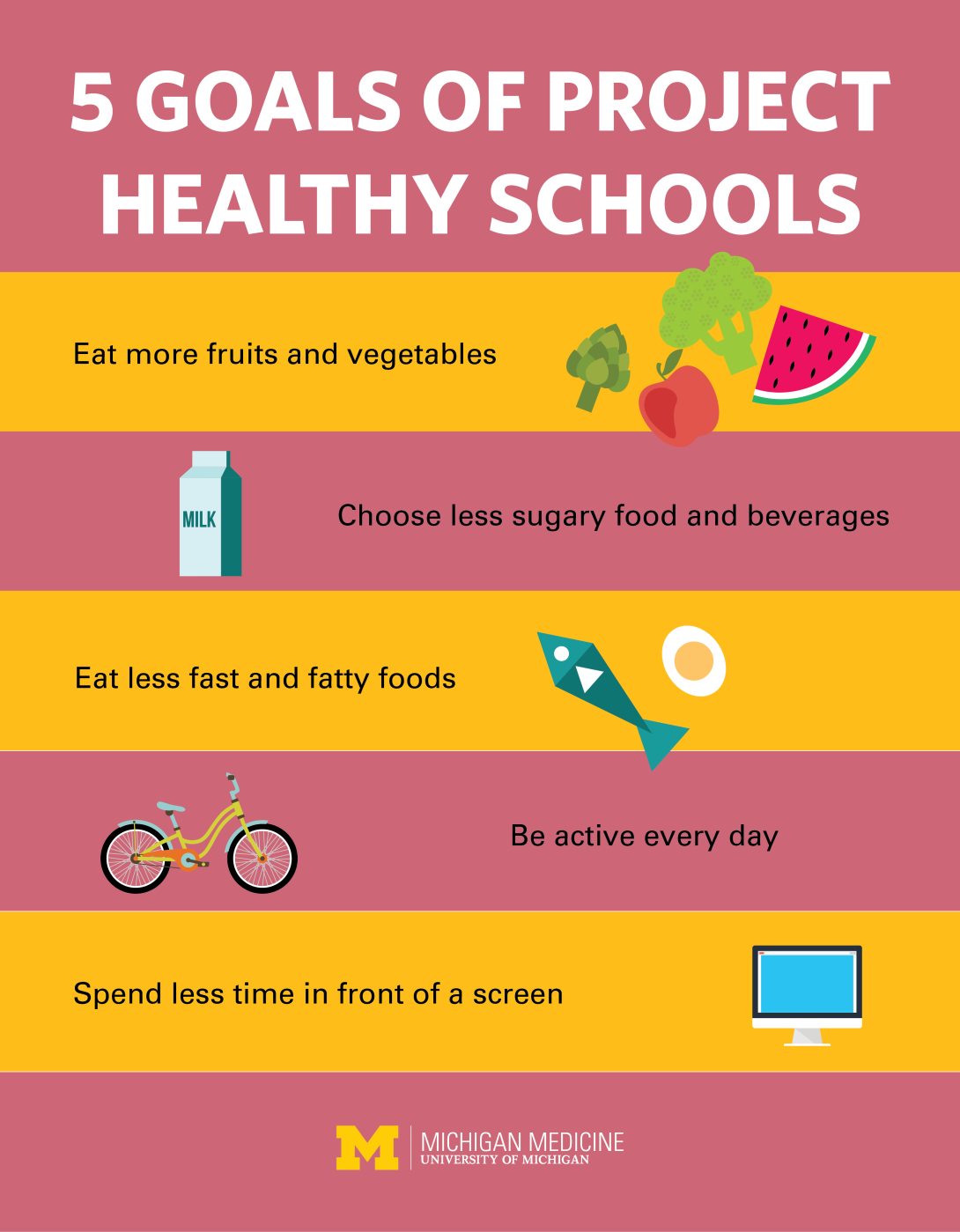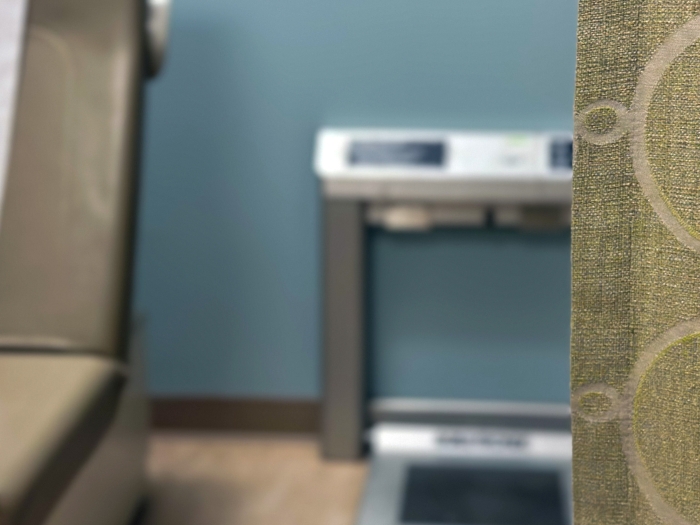An evidence-based wellness program for middle schoolers has recorded many healthy improvements. In a new paper, experts share lessons learned.
7:00 AM
Author |

How do you inspire middle schoolers to prioritize healthy eating and exercise and reduce screen time — all risk factors in future heart disease?
MORE FROM THE LAB: Subscribe to our weekly newsletter
Project Healthy Schools, a collaboration among physicians, researchers, educators and public health experts, has been seeking to do just that since 2004. More than 60,000 sixth-graders in over 90 schools across Michigan have participated or are participating in the program, which teaches the merits of healthy eating, daily physical activity and reduced screen time.
Recently, the Michigan Medicine-led team behind the project shared some key findings from 13 years of lessons in the American Journal of Medicine.
The team hopes that it will help other regions implement similar programs, improving health in this age group.
Obesity and inactivity are prevalent
In a 2013 study, researchers found that 17.4 percent of students participating in Project Healthy Schools were overweight, and 18.6 percent were obese. That's in line with nationally increasing numbers of children who are obese, which leads to concerns about obese adults at risk for cardiovascular disease.
"We found the obese students were more likely to have cardiovascular risk factors such as higher cholesterol," says senior author Kim Eagle, M.D., program founder and a director of the University of Michigan's Frankel Cardiovascular Center. "We also saw more screen time, more consumption of regular soda and less physical activity."
SEE ALSO: Activity Trackers: Tools for Patient Behavior Change
Screen time is known to increase the risk of childhood obesity. The Project Healthy Schools researchers found the students who spent less time watching TV, using computers and playing video games participated in more strengthening exercises and on more sports teams. They also found all screen time isn't equal.
"Passive screen time, such as watching a TV show, resulted in more unhealthy behaviors than active screen time, such as playing a computer or video game," says Jean DuRussel-Weston, RN, MPH, the Project Healthy Schools program manager and a co-author of the new report. "The students who spent a lot of time in front of a screen were more likely to eat unhealthy snacks, but the passive screen time group also had higher blood pressure and body mass index."

Students' health after the wellness program
With these figures in mind, researchers set up interventions, measuring success in two ways: physiologic measures and healthy behaviors.
Both were assessed at baseline and again after the program, which includes 10 lessons on topics including limiting sugar intake, improving heart health and evaluating food and beverage advertising. After the program's minimum of 3 hours and 20 minutes of instruction, both physiologic measures and healthy behaviors improved.
SEE ALSO: Are Schools Prepared to Save Lives?
Two studies showed significant improvements from baseline to follow-up in measures such as total cholesterol, random glucose and diastolic blood pressure. And over time, the Project Healthy Schools students ate significantly more fruit, exercised more and watched less TV.
"These physiologic results are sustainable," says Eagle, cardiologist and U-M's Albion Walter Hewlett Professor of Internal Medicine. "Four years after Project Healthy Schools, students in the five schools we studied sustained their improvements in areas such as total cholesterol, LDL cholesterol and reduced resting heart rates."
And improvement was observed regardless of socioeconomic status.
"Baseline health status was worse in low-income communities, yet students from both communities showed significant improvements in behavioral and physiologic measures after the curriculum," DuRussel-Weston says.
When eliciting and sustaining these changes, researchers say collaboration is key. The Project Healthy Schools program has brought together schools, health systems, donors and other stakeholders, allowing the lessons to reach more children around the state.
A key partnership with Building Healthy Communities, which is supported by Blue Cross Blue Shield of Michigan and the Michigan Department of Health and Human Services, also helped extend the program's reach.
And in each community, it relies on school administrators to encourage healthier behaviors, such as increasing the availability of healthy food and drink options. Students in schools that made environmental changes while implementing the curriculum ate more fruit and exercised more than students who received only the educational sessions.
Project Healthy Schools continues to increase its reach across Michigan, expanding its Upper Peninsula footprint this fall through a partnership called Healthy Kids U.P.

Explore a variety of healthcare news & stories by visiting the Health Lab home page for more articles.

Department of Communication at Michigan Medicine
Want top health & research news weekly? Sign up for Health Lab’s newsletters today!





